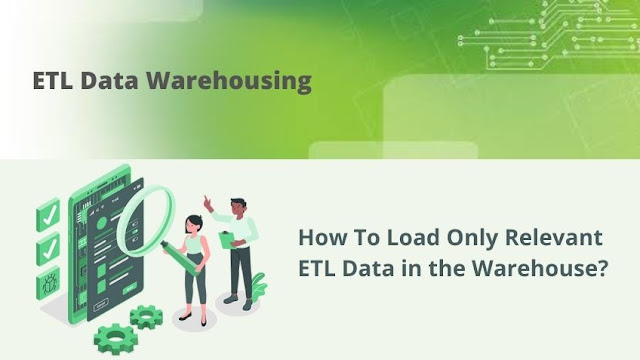How to Load only Relevant ETL Data in the Warehouse?
Businesses can no longer afford to evaluate their data at the end of every week – or even every month – as they once could. As the business environment continues to evolve at a fast pace, it has become important for businesses to employ data warehouses to analyze and query their data in near real-time in order to extract quick insights and make timely business decisions.
In order to achieve faster time-to-insight, data from transactional systems must often be gathered straight from the systems in which it is received as soon as possible. Moving whole databases every time you need to do analysis on your data is, however, completely unrealistic. For the reason that transferring all of your data for each query might be resource-intensive and result in excessive delays, particularly when your database contains millions of entries, we recommend that you avoid doing so.
The significance of data-relevant management is emphasized below
Data is increasingly being seen as a corporate asset that can be utilized to make better business choices, enhance marketing campaigns, optimize company operations, and cut expenses, all with the objective of boosting revenue and profits, according to industry experts. The absence of proper data management, on the other hand, can leave organizations with incompatible data silos, inconsistent data sets, and data quality issues, all of which can make it difficult to run business intelligence (BI) and analytics applications or, even worse, lead to erroneous conclusions.
Data management has also become relevant as firms have been subject to a growing number of regulatory compliance obligations, including data privacy and protection regulations. Additionally, corporations are gathering ever-increasing amounts of data as well as a greater range of data kinds, both of which are trademarks of the big data platforms that many firms have implemented. Such settings may grow bulky and difficult to traverse if data management is not properly managed.
Why is it not possible to analyze and query data in the source system?
The need to duplicate data before analyzing or querying it might be justified for a variety of reasons. Transactional databases are often used to store data at the beginning of the process. It may take a significant amount of time to query data directly from these databases since they are operational in nature and were not developed explicitly for analytical purposes. This is especially true when dealing with big amounts of data.
What’s more, these operational databases are also often accessed, which means that performing queries or analyses directly in the source table may result in difficulties with the flow of information. In the event that the data in these databases is converted or modified directly at the source, it is likely that there will be no way to restore the data to its original state. Performing analysis in the source transactional database while new data is being put into these databases might create interruptions as well as influence the quality of the insights you’ll be able to get from the data.
ETL Data warehousing has been progressive to the point where they can handle large amounts of data effectively. The structure enforced by an ETL platform makes it simpler for a developer to construct a more robust system, and as a result, the overall performance of the data transfer process is boosted.
Effectiveness of loading relevant data in the warehouse: ETL vs. ELT
The extraction, transformation, and loading of data from various sources into a data warehouse, as well as the associated transformation, are accomplished via the use of an extract-transform-load or an extract-load-transform process. Making the option between ETL and ELT is a critical decision in the construction of a data warehouse. Data is converted before being loaded into an ETL pipeline, and it is expected that no more transformation would be required for reporting and analysis. ETL Data warehousing has long been the de facto norm until the introduction of cloud-based database services with high-speed processing capacity. The data warehouse didn’t have to include totally converted data, and the information may be changed later if the situation called for it. The following are some of the benefits of employing this kind of data warehousing.
- When creating the data flow structure, it is not necessary to be aware of the transformation logic.
- When compared to the ETL procedure, which transforms all data before it is fed into the data warehouse, just the data that is necessary needs to be changed.
- ELT is a more effective method of dealing with unstructured data since, in the case of unstructured data, it is not always clear what should be done with the data upfront.



Comments
Post a Comment